The Broke Backpacker is supported by you. Clicking through our links may earn us a small affiliate commission, and that's what allows us to keep producing free content 🙂 Learn more.
I don’t know exactly how you ended up reading this article, but here you are. Maybe you’re just having fun browsing the internet and thinking about planning a vacation. Or maybe you’re in a cramped cubicle, listening to cold rain pattering on the roof. Maybe you’re dreading the 6:00am alarm that will start the cycle all over again tomorrow morning. That is, maybe you’re contemplating making a real lifestyle change.
Brazil usually isn’t the first idea that comes to the mind of the battered 9-to-5er, but the benefits are actually pretty surprising. If soccer, beautiful parks, unique culture, and temperatures that rarely dip below 55 degrees sound good to you then you really might enjoy living in São Paulo.
This article is going to give you the whole shebang, covering everything you need to know about making this amazing, life-changing decision. In particular, I’m going to focus on providing (in detail) the cost of living in São Paulo, as well as some day-to-day practicalities and things you should be aware of before embarking.

Do You Want to Travel FOREVER??
Pop your email in below to get a FREE copy of ‘How to Travel the World on $10 a Day!’.
Why Move to São Paulo?
If you’ve ever visited São Paulo, you know that a big part of its international claim to fame is its status as a backpacker hotspot. But perhaps you’re a little more seasoned, a little more mature—the backpacker life seems a little juvenile at this point. No, the big question on your mind is “what is it like to live in São Paulo?” Like literally every other place on planet earth, there’s the good and there’s the not-so-good.
First, the good. São Paulo has a hardcore nightlife party scene. If you’re into that sort of thing, you definitely won’t be disappointed. The city is also known as the main business and financial center of Brazil, so although the job market can be competitive and hard to break into, there are tons of opportunities for ex-pats to find work. It feels like summer almost year-round, and if you’re moving with kids, it’s easy to find family housing. The culture is rich, museums abound, and Parque Ibirapuera provides a fantastic, huge green area for all sorts of activities. The list goes on and on.

The Broke Backpacker is supported by you. Clicking through our links may earn us a small affiliate commission, and that's what allows us to keep producing free content 🙂 Learn more.
Now, the not-so-good. If you’re planning on getting a job in São Paulo, it’s pretty important to know the basics of how to speak Portuguese. Also, utility prices tend to be pretty substantial, and the city has a bit of a traffic problem (though you don’t need to own a car here, and the metro isn’t beholden to traffic). If you can’t handle a constant lively atmosphere, you have a problem with hot weather, and you get nauseous at the thought of learning Portuguese, you might want to cross São Paulo off your list.
Cost of Living in São Paulo Summary
If you’re still with me, I’d guess you’re somewhat serious about moving to São Paulo. In that case, the first thing you’ll need is a basic grasp of the average monthly costs.
As with any city or region, average living expenses are distributed across a huge range. Where you’ll personally fall in this range is largely a matter of your standard-of-living requirements. In general, though, I would say a reasonable average is $1,000-$1,250 per month. Of course, you could always find people who live here for less, as well as people who spend exorbitantly more than this throughout the course of a single week.
I spent a lot of time reflecting on my personal experiences, as well as researching heavily from a variety of sources in order to come up with the figures in the table below. Trust me, you can trust them.
| Expense | $ Cost |
|---|---|
| Rent (private room vs. luxury villa) | $250-$2,000 |
| Utilities | $50+ |
| Mobile Phone | $15-$20 |
| Home Internet | $20-$50 |
| Eating Out | $75-$125 |
| Groceries | $200+ |
| Housekeeper (less than 10 hours) | $25+ |
| Scooter Rental | $200-$250 |
| Gas | $20+ |
| Gym Membership and Activities | $20+ |
| TOTAL | $875+ |
What Does it Cost to Live in São Paulo – The Nitty Gritty
Now that you have a general idea of the monthly cost of living in São Paulo, let’s take a closer look at the specifics of each item.
Rent in São Paulo
Quite obviously, your biggest monthly cost upon moving to São Paulo is going to be rent (hint: if it’s not, something is wrong and you need to either rethink your budget or your lifestyle). And as you’d probably expect, the nicer your place and the nicer the area, the higher your rent will be. A luxury villa right in the city center or in an exclusive area like Jardins is going to cost much more than a shared room on the outskirts of the city.
As such, the first thing to think about is what type of accommodation you’re looking for. Are you a solo broke backpacker looking to save every penny? If so, you’ll probably gravitate toward a shared apartment. Or maybe you’re moving with your significant other or your family. In that case, you’ll probably want a private place with some more space.

One key to saving money on rent in São Paulo (or any city, for that matter) is to focus on places outside the main city center. A lot of times, renting in an area like this can save you a good chunk of money with only a minimal reduction in convenience. Would you rather pay $1,000 per month for a place right in the middle of the city, or $600 for a place that’s only a 10-minute walk away?
Your best bet for actually locating accommodations in São Paulo is to do it the traditional way: find yourself a real estate agent. A good agent will be knowledgeable about the different neighborhoods in the city and should be able to find you a reasonable price in an ideal area. Also, rental websites abound, so feel free to browse. But just know that if the website is in English, prices are probably a bit inflated. And of course, you can always be scrappy and just ask the locals once you arrive if they know of any places.
Finally, there are numerous Facebook Groups advertising rentals in São Paulo, but most of them are written exclusively in Portuguese.
- Room in Shared Apartment: $250-$350
- Standard 2 Bedroom Apartment: $500-$750
- Penthouse in Nice Neighborhood: $1,800+
Regardless of what you end up choosing, I highly recommend booking an Airbnb or hostel in São Paulo for the first few days after your arrival. It’s a good way to get situated as you finally turn your dreams into reality!

Home Short Term Rental in Sao Paulo
Editor will provide
Transport in São Paulo
Here’s the thing about São Paulo: it’s busy, and there can be a lot of traffic. But once you get to know the city, you’ll be able to get around with no problem, even during busy times. The key is knowing how to travel.
Most visiting tourists and locals prefer to use public transportation. São Paulo has an excellent bus system and metro system—the metro moves around five million people every day! Single tickets for both the buses and the metro are extremely cheap. These two methods should be your go-to when traveling in the city center.
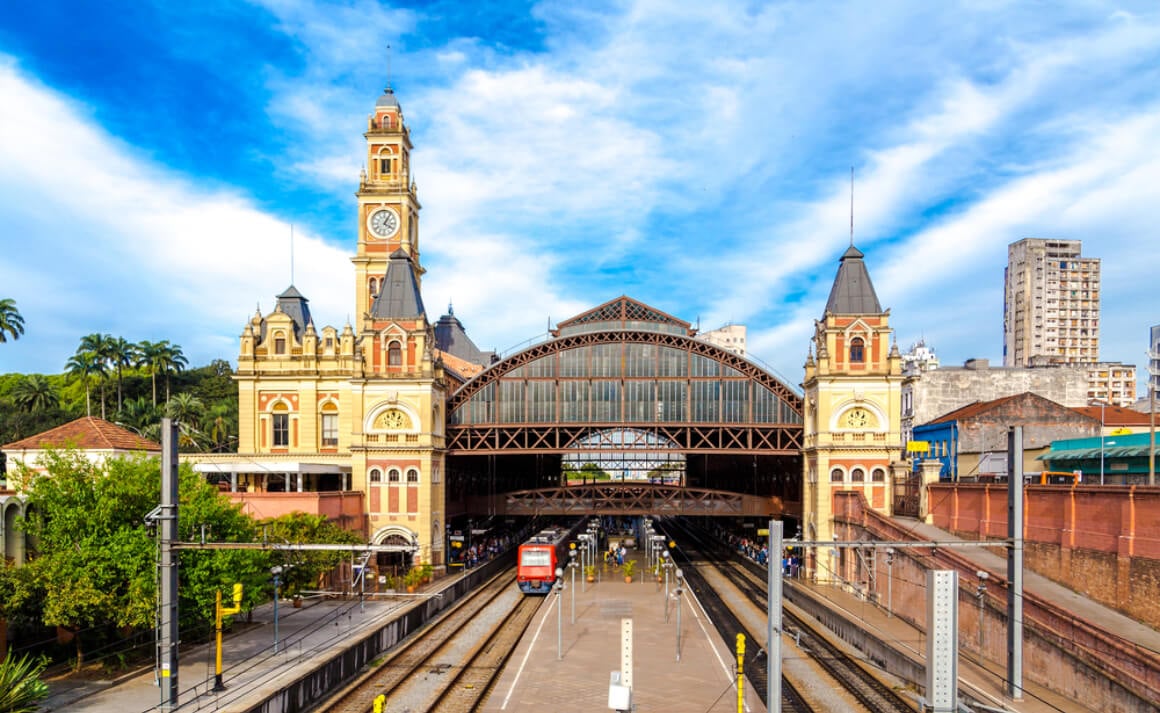
Car and motorbike travel are also good options, especially when traveling a little farther from the city center. However, given the somewhat commonplace (and beautiful!) chaos that is São Paulo, these methods probably won’t be as efficient as the metro. São Paulo does have almost 300 miles of bicycle paths, though; so if you’re renting a place a little way outside the city, a bicycle can be a game changer.
- Single Bus/Metro Ticket: ~$0.85
- Taxi Ride (Airport to City Center): ~$20
- 125cc Scooter Rental: ~$10 per day (but negotiable if you rent by the month)
Food in São Paulo
The food options in São Paulo are almost overwhelming. What’s amazing about this city is that it has more than its fair share of both fine dining and street food. You could eat something new every day for weeks and still not even scratch the surface of everything on offer here.
As you likely already know due to any current budgeting efforts you might be making, eating in is almost always cheaper than eating out. That being said, you wouldn’t be taking advantage of everything São Paulo has to offer if you stay home every night cooking sad imitations of the authentic Brazilian food available on the street.

Pão na chapa is a São Paulo breakfast staple—it’s basically puffy bread served with copious amounts of melted butter. You can buy Pão na chapa and other street food dishes like this for around $1-3. Nicer, sit-down type restaurants are going to be more like $7-12 per person. And the super high-end restaurants will be substantially more expensive still.
The culinary-minded among you are probably wondering about supermarket and grocery store prices. In general, you’ll want to find your ingredients in the less touristy spots, in order to get the lowest prices available. And of course, anything that needs to be imported is going to come at an inflated price. I recommend buying locally-sourced ingredients and whipping up some home-cooked São Paulo cuisine.
- A Dozen Eggs: $2.30
- 1 Pound of Rice: $0.58
- 1 Pound of Chicken Fillets: $2
- Loaf of White Bread: $1.70
- 1 Liter of Milk: $1.25
- 8 oz of Local Cheese: $2.50
- 4 Pounds of Apples: $4
- 4 Pounds of Potatoes: $2.50
Drinking in São Paulo
Definitely do not drink the tap water in São Paulo. A good rule here is water in, water out (if you catch my drift). Even the locals usually all have filters installed in their taps—but if you don’t want to go that route, bottled water is extremely cheap. A 1.5-liter bottle costs only ~$0.60. Believe it or not, staying hydrated and healthy is actually more important than staying on budget, so obviously spend as much as you need. Bottled water tends to be cheaper when you buy it in bulk, so I recommend buying packs of a dozen or so at a time.
Alcohol prices aren’t terrible, but they can add up fast if you’re not careful. A pint of standard domestic beer will run you about $3, while a more expensive imported brand will be closer to $5.50. A run-of-the-mill bottle of wine can be anywhere from $8-$10. You can expect actual prices to be higher or lower than my estimates depending on whether you’re buying from a restaurant or a supermarket/liquor store.
Keeping Busy and Active in São Paulo
I take it as a given that you’re not really contemplating a move to São Paulo just so you can sit inside, and watch The Office, and DoorDash fast food. And if that is your plan, I’m here to tell you that you should change it; because there are loads of things to do in São Paulo.

Though the words “São Paulo” and “Brazil” sound so far off and exotic (and in many ways they are!) it’s important to remember that São Paulo is a fully-fledged, populated, modern city. Within limits, anything you can do in New York City, London, or any other big city, you can do here as well. I’m talking about working out at the gym, going to a yoga session, attending recreational and sports clubs, going to concerts, reading and relaxing in Parque Ibirapuera, etc.—the sky is the limit. Of course, all the usual pricing hacks apply here: for any rentals or memberships, long-term will be cheaper than the day pass, and rarer, more specialized hobbies (like CrossFit, hot yoga, etc.) will generally cost more than their standard counterparts.
During your time living in São Paulo, you’ll also want to really immerse yourself in the Brazilian lifestyle. Here are some of the more specifically “Brazilian” activities on offer:
- Explore Mercado Municipal de São Paulo, a wonderfully chaotic marketplace selling every different type of food you can imagine.
- Visit Catedral da Sé de São Paulo—this Gothic cathedral is one of the most popular tourist attractions in the city, and for good reason! The pictures are one thing, but it’s truly stunning in person.
- If you’re a person of class and culture, definitely check out Theatro Municipal de São Paulo. It’s an early 20th-century theater that still puts on heart-wrenchingly beautiful classical music performances.
- Gym membership: $20-$30 per month
- Local concert: $20+
- Samba dance class: $60-$100
- Catedral da Sé de São Paulo: Free!
- Yoga: $10-$15 for a single class or $100 per month
- Theatro Municipal de São Paulo: $0-10 per show
Schools in São Paulo
As long as you are a permanent resident in São Paulo, you can enroll your kids in the public school system free of charge. However, the quality of education here isn’t excellent, and all public school classes in São Paulo are taught in Portuguese—so if your children aren’t fluent, I would cross this option off your list.
Many ex-pats in São Paulo decide that international schools or private schools are the best options, though there are pros and cons for each. International schools usually provide the best education, and you’ll definitely be able to find schools where your kids can learn in English. However, these schools also come at the highest prices.
Most ex-pats send their kids to private schools. These can be hit-or-miss, but if you’re able to find one that teaches mostly in English, you can expect a good quality education for less money than you’d be paying at an international school. To summarize:
- Public School: Free
- International School: $10-$15,000 per pupil per term
- Private School: $500-$750 per pupil per term
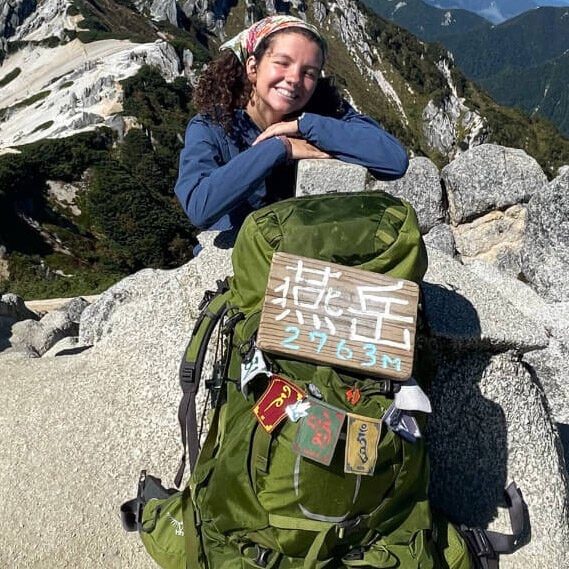
We’ve tested countless backpacks over the years, but there’s one that has always been the best and remains the best buy for adventurers: the broke backpacker-approved Osprey Aether and Ariel series.
Want more deetz on why these packs are so damn perfect? Then read our comprehensive review for the inside scoop!
View on OspreyMedical Costs in São Paulo
The healthcare system in Brazil is very similar to the school system. Public healthcare is available for free to residents, but the general consensus among ex-pats is that the quality of care provided is too poor to make it worth it. Like schooling, many ex-pats prefer to use private healthcare providers. Technology is newer, language barriers are less intimidating, and doctors are usually more knowledgeable.
If you do opt for private healthcare, the usual route is to buy health insurance. Expect to pay around $100 per month for a good single-person plan. For a family of three or four, think $150-$200 per month.
SafetyWing offers a monthly healthcare plan which covers Digital Nomads, ex-pats, and long-term travelers. We have been using them ourselves for a while now and find them to provide great value.
Visas in São Paulo
Brazil has two main visa categories: VIVIS visas, and VITEM visas. VIVIS visas are for visiting the country as a tourist, while VITEM visas come in many different forms, but are usually for the purpose of longer stays and work-related trips.
Sadly, Brazil recently ended its ‘no visa’ rule for tourists, which means that visitors will need to pay $80-$160 for a VIVIS tourist visa to enter Brazil.
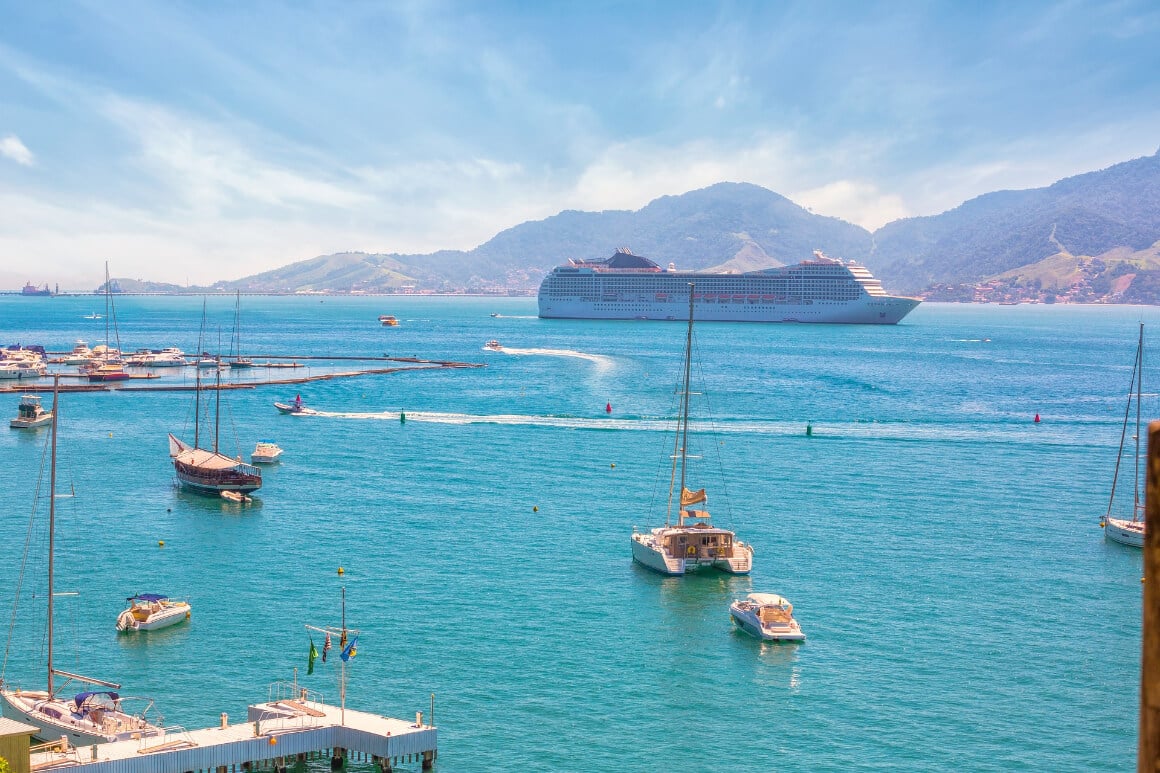
But since you’re thinking about moving to and working in São Paulo, you’ll need to get a VITEM visa. There are tons of different kinds of VITEM visas, but for your purposes, you should look into getting the VITEM V visa, which will cost you $290. This visa is temporary at first, but after two years of living in Brazil, you can apply for a permanent work visa. The cost of this permanent visa varies depending on which country you’re from.
It’s important to note that, though many people do it anyway, completing any type of work on a tourist visa is prohibited, even if you’re working online as a Digital Nomad. Make sure you get the correct type of visa based on your work needs—you definitely don’t want to disappear indefinitely into a São Paulo prison cell.
Overall, the visa system in Brazil is a bit convoluted, so make sure to properly do your research. If you’re still confused, I recommend visiting your nearest Brazilian consulate and speaking to real humans, face-to-face (intimidating, I know).
Banking in São Paulo
In general, Brazil’s banking system is intuitive and mostly hassle-free. And given the fact that São Paulo is the financial center of Brazil, you don’t need to expect much trouble when it comes to managing your money here.
To open a bank account, the process will probably be very similar to what you’re used to in your home country. You will need to have a permanent visa before opening an account (as mentioned in the above section, you can get a permanent visa after you’ve lived in the country for two years). You also may need to provide your taxpayer number and ID card.

Much of Brazil is still very rural and cash-based. You definitely won’t have this problem in the heart of São Paulo, but if you want some hard cold cash just ’cause, ATMs are everywhere and easy to use, with reasonable fees.
I do recommend that you open a Brazilian bank account and start living like a local as soon as possible, as prolonged use of your home country’s bank and card will probably come with some higher costs as time goes on.
Find out how much your money is worth today by using the up-to-date converter below.
Taxes in São Paulo
At a high level, the tax system in São Paulo is straightforward. The rates are reasonable, and if you’re working for a company that’s located in Brazil, the company will usually withhold your taxes from your paychecks. If you’re working as a Digital Nomad for a company outside of Brazil, you’ll pay taxes via Brazil’s PAYE (pay as you earn) system. Essentially, you pay the required amount of taxes on a monthly basis. Of course, there are variations and exceptions to these rules, so be sure to do some research on tax protocol for your specific employer or type of income.
One thing many people overlook is that, even though you’ll be living in Brazil, you might still be subject to certain tax laws in your home country. This depends on your official citizenship status, as well as where your employer is based. If all of this seems overwhelming, consider hiring a tax advisor. This way, they can focus on the boring stuff while you focus on the fun stuff!
Hidden Costs of Living in São Paulo
Whether you’re embarking on a backpacking journey, a one-week vacation, or permanently moving across the world, one thing I’ve found is that there are always random expenses that you just don’t think of beforehand.
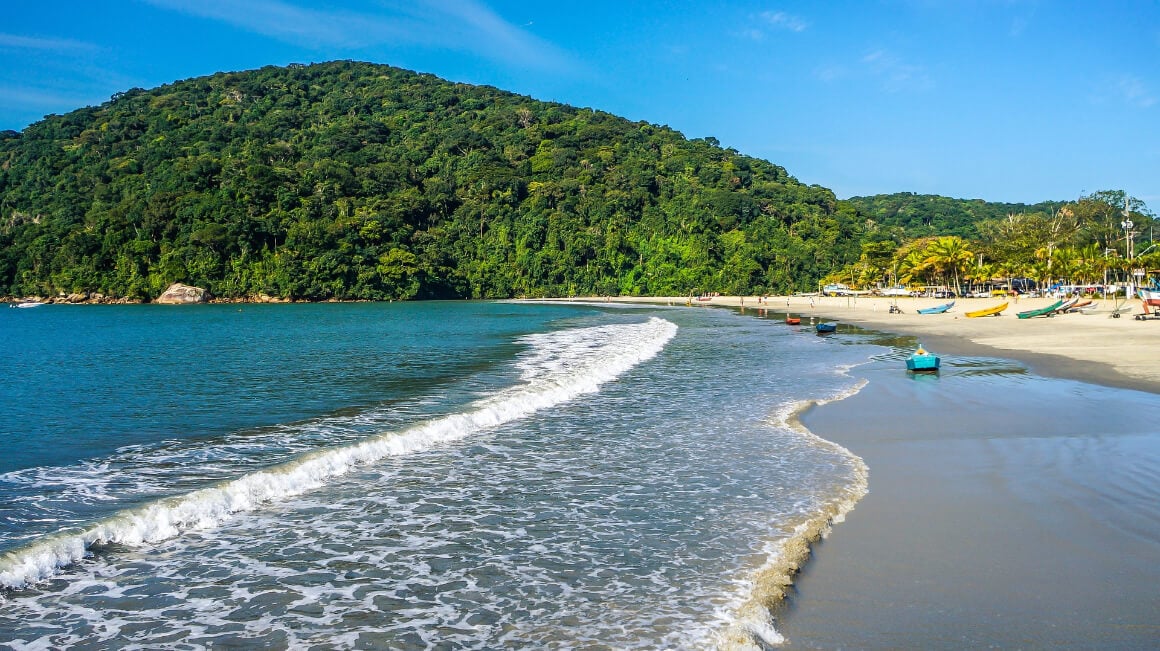
These can be little oversights, like forgetting to budget for service fees and tips at restaurants, or they can be disastrously expensive. You may need to fly home unexpectedly for a wedding, or a funeral, or you may develop a crippling addiction to the casinos (please don’t). My point is, you can budget for the unexpected.
I highly, highly, highly recommend you take your time and plan far enough ahead so that you have a few thousand dollars in savings at the time of your move. This is a huge decision you’re making, and nothing would be worse than for it to fail needlessly because of impatience or lack of planning.
Insurance for Living in São Paulo
So, in terms of safety, São Paulo is a bit like Chicago. You hear bad things about it on the news all the time, and so you imagine gangs running rampant through the streets, mugging and robbing innocent tourists at will. But if you’ve ever been to Chicago, you were probably surprised to find that it actually felt very safe. The reason for that is this: in both of these cities, the city centers and specific, wealthier neighborhoods are the safest places. While São Paulo is considered to be a bit more of a dangerous city, the vast majority of the crimes occur in the low-income neighborhoods away from the city center.
That being said, bad stuff happens. It’s just a fact. If you make sure to do your research and find a home in a safe part of the city, then said “bad stuff” likely won’t be crime-related. But even in the best neighborhoods, you should be prepared for things like motorbike accidents, tropical sicknesses, etc.
As I mentioned above in the section about medical costs, SafetyWing is our recommended health insurance provider. Have a look at their website, and if you like what you see, get a quote!
Month to month payments, no lock-in contracts, and no itineraries required: that’s the exact kind of insurance digital nomads and long-term traveller types need. Cover yo’ pretty little self while you live the DREAM!
SafetyWing is cheap, easy, and admin-free: just sign up lickety-split so you can get back to work! Click the button below to learn more about SafetyWing’s setup or read our insider review for the full tasty scoop.
Moving to São Paulo – What You Need to Know
Now that we’ve covered cost estimates for your most significant expenses, let’s take a look at what it’s really like to live in São Paulo. Below, I’ll cover some practical tips and advice you’ll want to keep in mind as you weigh your decision.
Finding a Job in São Paulo
So here’s the straight truth about working in São Paulo. In general, the city abounds with job opportunities. Over 30% of the entire country’s GDP comes from São Paulo alone. It’s the financial center of the country, so you definitely won’t have any trouble sending in applications. Here’s the thing though: almost all jobs that are actually based in São Paulo require you to speak Portuguese. If you’re a sad, unilingual English speaker like me, this might be a tough pill to swallow, but it’s true.
On the bright side, however, English-only jobs do exist—but they’re rare. And you’ll be in a pretty good spot if you have real experience in finance, engineering, IT, or related fields. Keep in mind though, salaries in São Paulo are generally below what you’re probably used to if you’re from Europe or the USA. Finance managers and IT managers should expect around $50-$60,000 per year, with business analysts or accountants usually earning $30-$40,000. Given São Paulo’s cheap expenses though, these salaries will usually work out to provide you effectively the same standard of living you’d expect in western countries.
If you can’t find the elusive English-speaking job and you don’t have any experience in the above areas, your best bets would be to either work as a Digital Nomad (more on that in the below section) or to teach English. In general, though, English teachers in São Paulo are pretty underpaid: $12-$18,000 per year is the norm. Still, though, this salary could easily afford you a good lifestyle in São Paulo, as long as you make wise spending choices in other areas.
Where to Live in São Paulo
São Paulo is nearly double the size of New York City, and it’s continually growing. There are so many different areas, each with its own pros and cons. As I mentioned in the insurance section above, knowing these areas is key. Not only will it help you stay safe, but it will also help you decide where you’re going to move so you can actually build a genuinely great life in your new home city.

Below I’m going to give an overview of some of the most common areas and suburbs of São Paulo. Keep in mind that the list below only scratches the surface—São Paulo is gigantic, and the options are nearly limitless. Feel free to use my information and research on your own as much as you feel is necessary, but just know that nothing beats actually getting on the ground and exploring on your own. I would never move to a city that I haven’t visited in person at least once.
Morumbi
This would be my top choice if I was moving to São Paulo with a family. It’s a clean area with lots of parks, great international schools, and no shortage of stores and restaurants. It is a little farther away from the city center, but it’s easily accessible via the metro system. Plus, its distance from the city center is the precise reason why it’s such a beautiful, non-polluted area of the city.
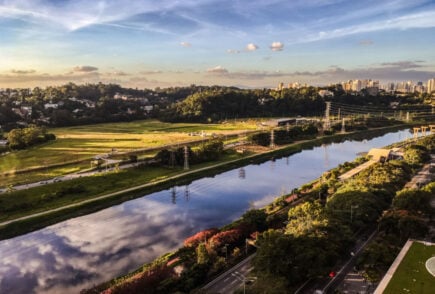
Editor provide
Editor will provide
Chácara Flora
Another great spot for families, Chácara Flora is similar to Morumbi in that it has lots of parks, it’s relatively clean, and there’s a great selection of schools to choose from. It’s definitely a bit more expensive to live in than Morumbi, but there are reasons. It’s an extremely safe part of the city with tons of good condominiums and apartments, and it’s also right near Conganhas/São Paulo Airport (one of the city’s four airports), which makes it ideal for those who need to travel often.

Editor provide
Editor will provide
Santa Cecília
Santa Cecília is one of many areas perfect for younger people looking for a happening nightlife scene. It’s located right near the heart of the city, so bars and other hangout spots abound. To be honest, it’s pretty noisy and not the cleanest. But the rent prices are very low here, and you’ll be surrounded by the rich culture and lots of historical architecture. If you’re thinking about teaching English in São Paulo, Santa Cecília is a good place to start.

Editor provide
Editor provide
Brooklin Novo
Though it’s bound to become less like this as time goes on, Brooklin Novo is an area that’s still relatively untapped by tourism. It’s an area predominantly inhabited by locals, and although it used to be almost entirely residential, it’s been developed quite a bit in recent years. The mix of quiet areas and commercial development makes it a great spot if you’re looking for a corporate job, but also want to experience life as a local. If you’re okay with a bit more of a low-key, authentic Brazilian lifestyle, Brooklin Novo is for you.

Editor provide
Editor will provide
Where NOT to Live
In general, most (though not all) of the dangerous areas of São Paulo are far from the city center. At a high level, make sure to avoid areas like Capão Redondo, Lapa, Perdizes, Pari, Campo Limpo, and Vila Clementino. As sad as it is, it’s usually the case that the poorer the neighborhood, the more dangerous it is. As I mentioned earlier, always make sure to get on the ground and explore and ask around for yourself. Don’t just sign a lease on the cheapest apartment you can find online and hope for the best.
Culture
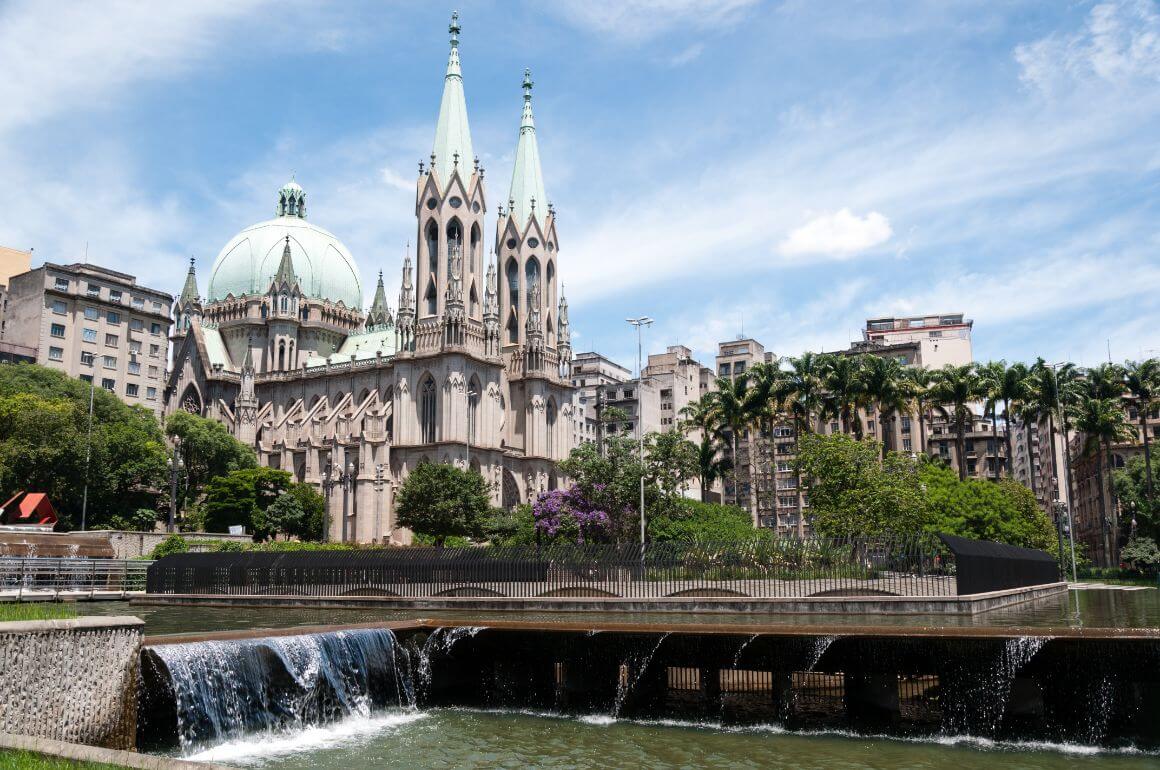
If you’ve ever been to Brazil, you know that the locals are warm, friendly, and incredibly kind to foreigners. The culture in São Paulo is extremely dynamic, as influences from all over the world have contributed to the city to make it what it is today. In general, ex-pats who live here have the benefit of not needing to live in bubbles with only each other. Though many prefer to do so (understandably), it’s more than possible to move to São Paulo as an ex-pat and fall head over heels for the authentic Brazilian way of life. The huge variety of neighborhoods and the friendly attitudes of most of the locals make this the preferred lifestyle for many ex-pats here.
Also, this going without saying, but if you love soccer, you’ll feel at home in São Paulo in no time.
Pros and Cons of Moving to São Paulo
As you no doubt have been able to deduce by now, São Paulo has tons of variety. There’s good and bad, and this article is meant to honestly inform you of life in São Paulo—it’s not a sales pitch. Let’s take a look at the major pros and cons of moving to São Paulo.
Pros of Living in São Paulo
Weather: As long as you’re a fan of warmer weather, the climate in São Paulo is just awesome. Temperatures and rainfall fluctuate with the seasons, but only minimally. You can generally expect summer temperatures all year round.
Job Opportunities: São Paulo is the thriving financial center of the entire country of Brazil. Though knowledge of Portuguese is usually a requirement, engineers as well as finance and IT professionals will find nearly endless job postings.
Cost of Living: Compared to the rest of South America, the cost of living in São Paulo is pretty high. But if you’re from Europe or the USA, you’ll be pleasantly surprised. In general, São Paulo has an excellent mix of high standards of living and low costs.
Assimilation: For the most part, Brazilians are friendly and open, and ex-pats will have no trouble making a home for themselves in some of the less touristy areas.
Cons of Living in São Paulo
Language Barrier: Though the job market is excellent, most jobs require a knowledge of Portuguese. Schools are the same way. If you can only speak English, you can absolutely still live a great life in São Paulo, but your options will be limited.
Healthcare and Schooling: The public healthcare and school systems in Brazil aren’t quite up to desirable standards. If you move here, you’ll likely find yourself paying for health insurance and, if you have kids, private or international schooling.
Chaos: São Paulo can be a crazy place, especially in the city center during the busy times of the workday. If you’re looking to escape the madness of a city and move somewhere more tranquil, don’t move here.
Safety: São Paulo is enormous, and each neighborhood holds something different. If you’re not careful, you could find yourself in the wrong place at the wrong time of the night. But if you do your research and ask around on the ground, you’ll be fine.
Living as a Digital Nomad in São Paulo
São Paulo is every Digital Nomad’s dream. Coworking spaces are everywhere, and you won’t have any trouble finding coffee shops with free Wi-Fi. Not only will you find an abundance of good spots to work, you’ll also meet tons of other Digital Nomads, who may end up becoming friends or even business partners!

Internet in São Paulo
Given the fact that São Paulo is the business hub of Brazil, you can expect excellent internet options. Generally, you’ll find the best speeds and overall coverage in the nicer areas of the city. Downloads and uploads are usually fast and reliable. For a 20 GB mobile data plan, you’re looking at ~$16 per month. For home internet, prices start from $20+, depending on how much speed you need.

A new country, a new contract, a new piece of plastic – booooring. Instead, buy an eSIM!
Jetpac eSIMs work just like an app: you download it, pick your plan, and BOOM! You’re connected the minute you land. It’s that easy.
Read about how e-Sims work or click below to see one of the top eSIM providers on the market and ditch the plastic.
Grab an eSIM!Digital Nomad Visas in São Paulo
VITEM XIV is the official name of Brazil’s Digital Nomad visa. You will need to visit the nearest Brazilian consulate in person in order to obtain this visa. The fee is $150, and the visa allows you to work in Brazil for an entire year. Here’s a bonus tip: as long as you’re not employed by a Brazilian company, you’re not considered a tax resident until you’ve been in the country for 183 days. So the first part of your first year working in Brazil can be tax-free!
Co-Working Spaces in São Paulo
I find it ironic how people dream of becoming Digital Nomads so they can escape their office environment, but then end up working in co-working spaces anyway! The benefits are good though: you’re in a professional workplace with an emphasis on productivity and focus, and you’re bound to connect with some remarkable people.
Studies have been done to show that Digital Nomads are more productive when they work in a co-working space. A monthly membership at a co-working space in São Paulo will cost you anywhere from $100-$160.
Final Thoughts on São Paulo Living Costs
As I said earlier, this article is not a sales pitch. I’m not trying to convince you to move to São Paulo but to give you an honest window into the costs and lifestyle of this wonderful, chaotic, unique, and beautiful city.
It is my hope that you now feel better equipped to make the best decision!
Buy Us a Coffee!
A couple of you lovely readers suggested we set up a tip jar for direct support as an alternative to booking through our links, since we’ve decided to keep the site ad-free. So here it is!
You can now buy The Broke Backpacker a coffee. If you like and use our content to plan your trips, it’s a much appreciated way to show appreciation 🙂










